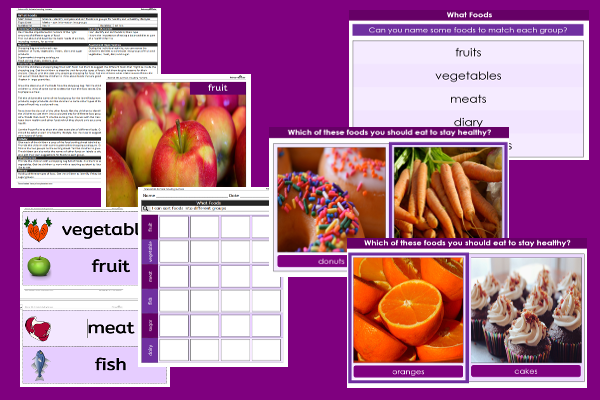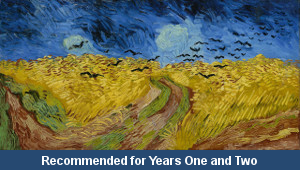Lesson One – What Foods

This science teaching pack for Key Stage One gets the children to identify, describe, compare and sort a range of different types of foods into matching groups for either healthy or unhealthy lifestyles.
The class can select and make lists of sets of foods to match the main food groups for vegetables, fruit, meat, fish and dairy.
Download this teaching pack including a lesson plan, classroom activities and an interactive presentation to teach the children to identify, describe, compare and sort a range of different types of foods into matching groups for either healthy or unhealthy lifestyles
Activities in this teaching pack include display posters to identify and describe the main types of food groups, a set of cards to cards to sort types of foods into different groups for vegetables, fruit, meat, fish and dairy and a template to list and sort a range of different foods into matching groups (enlarge to A3).
The interactive presentation gets the children to explore how to compare and sort a range of different foods into groups for healthy and unhealthy lifestyles.
This lesson is part of a science scheme of work to get the children to identify and compare the benefits of different types of foods including fruit and vegetables and discuss ways to care for the body using cleaning and exercise tasks. There are teaching activities for shared learning, differentiated worksheets to support independent learning and interactive presentations to introduce concepts and key skills.
-

Mother Nature
Explore how mother nature can provide nourishment, protection and support to all living things in different habitats and environments
-

Digraphs Word Sums
Investigate the spellings and meanings of different sets of words with a range of initial consonant digraphs
-

Van Gogh
Investigate and replicate the work and painting style of a famous artist from the past by producing a matching landscape of the school building
-

Harbour Labels
Practise structuring and formatting different word processed documents to describe a range of ships and boats seen in a harbour
